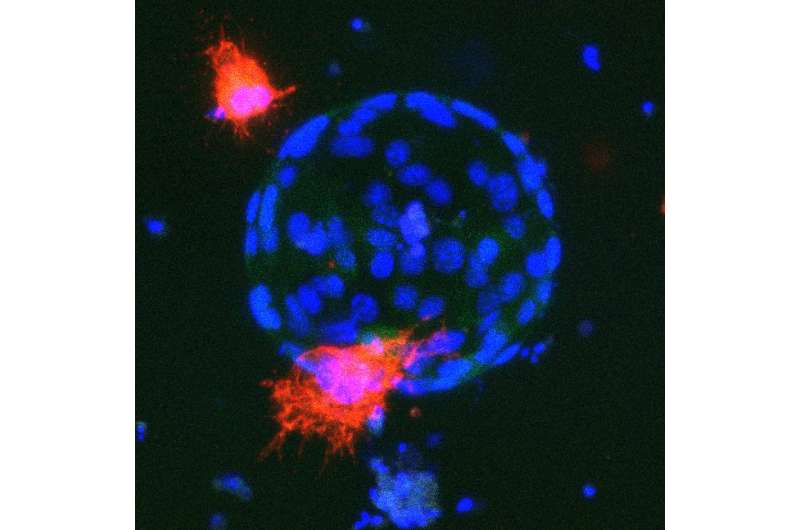It's all about the (stem cell) neighborhood

Stem cells have the ability to develop, or differentiate, into the many cell types in the body. They also serve as a repair system to replace aged or damaged cells. With their regenerative abilities, stem cells offer enormous potential in treating many diseases. Researchers at Duke-NUS Medical School have now identified how the stem cell neighbourhood keeps stem cells in the gut alive.
Stems cells in adult tissues live in very specific locations called stem cell niches. These niches provide a specialised, ideal neighbourhood for stem cells. The stem cells in the niche are undifferentiated, meaning they have not yet changed into mature cells. The niche regulates how stem cells participate in tissue generation, maintenance and repair. The niche prevents stem cells from being depleted, while protecting the body from over-production of stem cells. Understanding stem cell niches is therefore important in the field of stem cell therapeutics.
Understanding the role of the niche requires identifying the key cell types that regulate the numerous processes that take place within the niche. In the intestinal stem cell niche, the key regulators are hormones called R-spondins and Wnts, which are frequently expressed together. However, it is still unclear what type of niche cells make the Wnts and R-spondins.
A team headed by Gedas Greicius and Professor David Virshup, director of the Cancer & Stem Cell Biology program in Duke-NUS Medical School, studied the source and functional role of Wnts and RSPO3. RSPO3 is by far the most abundant R-spondin produced in the mouse small intestine. Using a mouse model, the team identified a specific cell called a subepithelial myofibroblast as an essential source of both Wnts and RSPO3. If these niche cells cannot make Wnts, mice do not develop adult intestines, and if these niche cells cannot make RSPO3, mice cannot repair the intestine after injury. Their work demonstrate the close interaction between epithelial stem cells and the niche that regulates them. This research provides new insights into the structure of the stem cell niche in health and after injury.
More information: Gediminas Greicius et al, PDGFRα+pericryptal stromal cells are the critical source of Wnts and RSPO3 for murine intestinal stem cells in vivo, Proceedings of the National Academy of Sciences (2018). DOI: 10.1073/pnas.1713510115
Journal information: Proceedings of the National Academy of Sciences
Provided by Duke-NUS Medical School


















